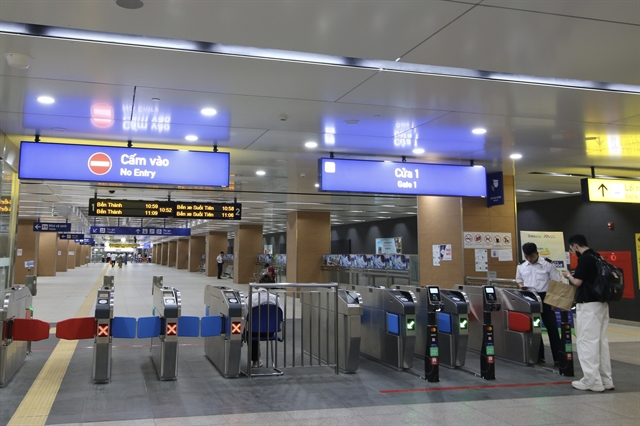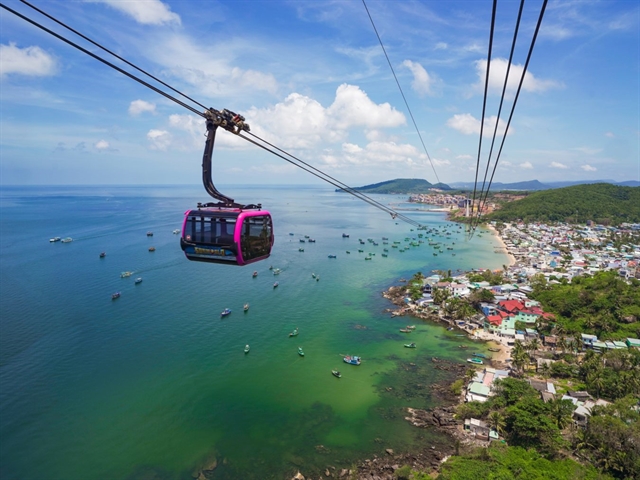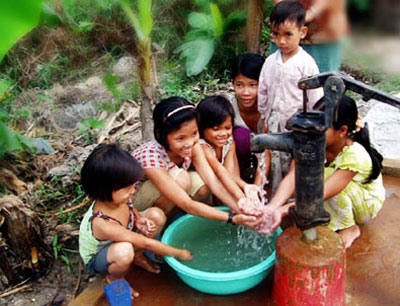 Society
Society

Rural infrastructure in northern mountainous provinces has improved significantly over the last six years thanks to the implementation of a sustainable infrastructure development project.
 |
| Rural infrastructure in northern mountainous provinces has improved significantly over the last six years thanks to the implementation of a sustainable infrastructure development project. — Photo moitruong.com.vn |
HÀ NỘI — Rural infrastructure in northern mountainous provinces has improved significantly over the last six years thanks to the implementation of a sustainable infrastructure development project.
The project, implemented between 2011-16 in 15 provinces, focused on building and upgrading rural infrastructure facilities for these localities, improving management capacity for local authorities and improving living conditions for the poor, according to the Ministry of Agriculture and Rural Development.
Total investment for the project was US$138 million, $108 million of which came from the Asian Development Bank and the remainder from the Government of Việt Nam, the ministry said at a conference held in Thái Nguyên Province on Thursday to review the project implementation.
The project’s main goals are the elimination of hunger and poverty, improvement of rural infrastructure and enhancement of local authorities’ power in each province, district and commune.
Living conditions of the poor are expected to improve significantly when the project is completed.
The project has basically achieved its set target, helping to change the general face of targeted localities and improve the living conditions of local people, said a representative from the ministry’s Agricultural Project Management Board.
Director of the project, Trần Văn Lam, said many infrastructure works of the project had been completed and already in operation, bringing in practical benefits for local people.
With convenient traffic and irrigation systems, local people’s production and trade activities would surely develop, he said.
So far, 42 out of 55 sub-projects have been completed. Construction of the remaining sub-projects is expected for completion by June 30.
Benefited localities include Bắc Giang, Bắc Kạn, Cao Bằng, Điện Biên, Hà Giang, Hòa Bình, Lai Châu, Lạng Sơn, Lào Cai, Phú Thọ, Sơn La, Thái Nguyên, Tuyên Quang, Vĩnh Phúc and Yên Bái.
New-style rural area
The building of new-style rural areas must be in line with urbanisation orientations to prepare for the establishment of urban areas and avoid wastefulness.
Deputy Minister of Construction Nguyễn Thị Mỹ Linh made the remarks at a meeting held on Thursday to make comments in relation to the project on building new-style rural areas in the process of urbanisation at the district level in the 2017-20 period.
Linh noted that the building of new-style rural areas is associated with agricultural restructuring, the formation of large-scale production areas and bringing rural living conditions closer to urban conditions.
Deputy Prime Minister Vương Đình Huệ said that the project should put forth a vision to build new-style rural areas towards urban area standards in harmonisation with socio-economic development plans and urban planning of the whole country and each locality, while preserving the cultural identity of the areas.
The Deputy PM noted that there are suburban areas which have been upgraded to urban districts but the transport system and infrastructure are invested under commune-level standards which do not meet the requirements for urban development, resulting in wastefulness.
More than 1,500 out of 9,043 communes and 15 out of 545 districts nationwide were recognised as new rural areas.
The national programme on building new-style rural areas, initiated by the Government in 2010, includes 19 criteria on socio-economic development, politics and defence, aiming to boost rural areas. The criteria covers infrastructure development, production capacity improvement, environmental protection and cultural value promotion. — VNS


.jpeg)

